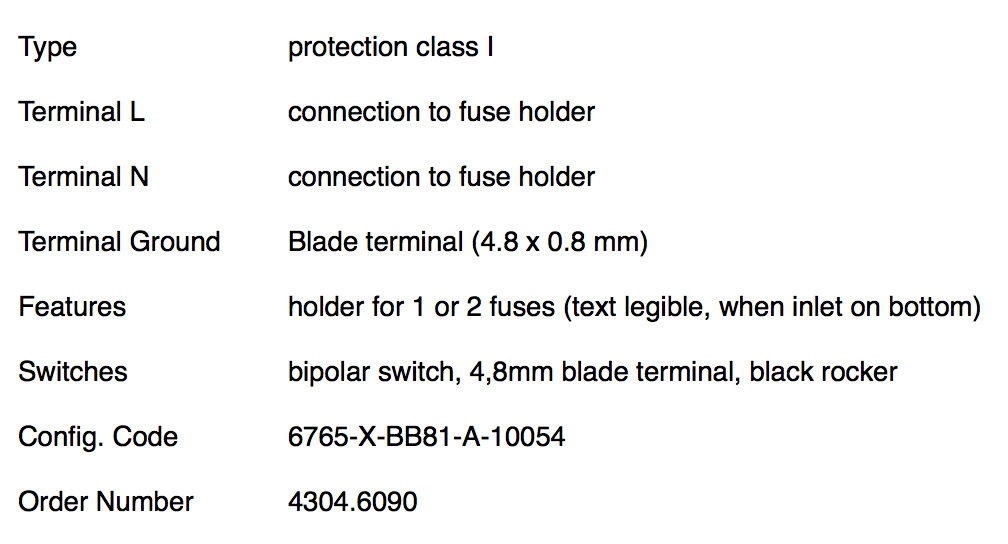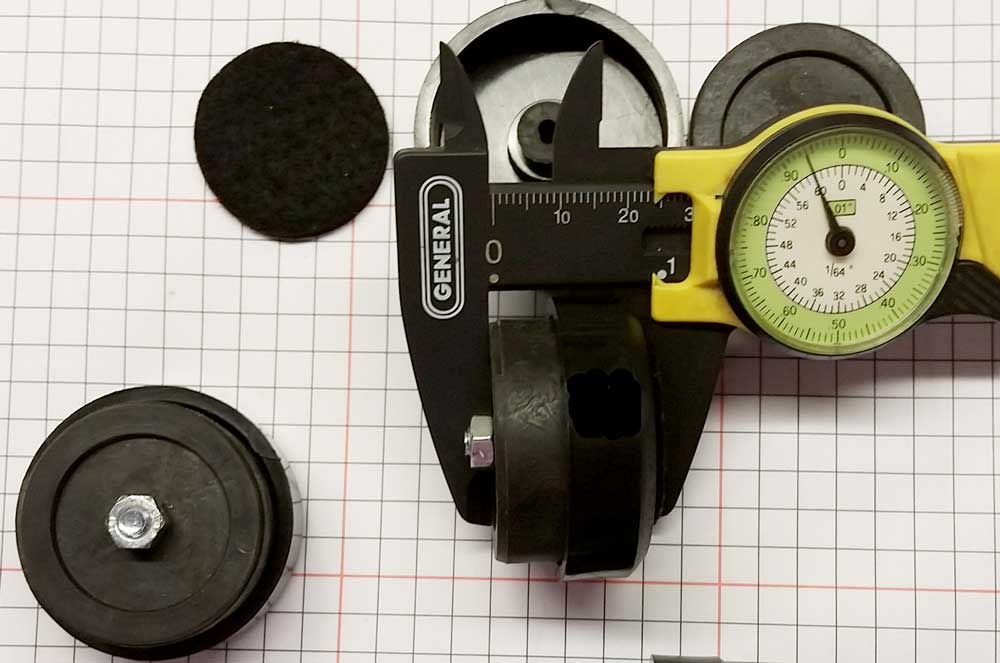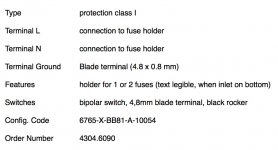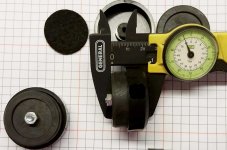Can you drill cleanly through 10mm? (I.E., do you have a drill press?) If so, awesome. If not, get the 3mm.
Yes, I have a drill press so no issues with that.
Fedex shipping from Hifi2000 to Canada
I'm curious about what fees FedEx charges for delivery of a chassis to
Canada. I don't mind paying taxes and duties as required but often the
courier brokerage and other fees are ridiculous.
Recently a chum in the US sent me something via Fedex. The item
(some old test equipment) has value ~100 and I ended up with almost
$50 in fees to Fedex (not including the sales tax)
Hopefully someone can share their experience.
Dennis
Has anyone in Canada ordered a chassis? What is the shipping like? Was there duty?
I'm curious about what fees FedEx charges for delivery of a chassis to
Canada. I don't mind paying taxes and duties as required but often the
courier brokerage and other fees are ridiculous.
Recently a chum in the US sent me something via Fedex. The item
(some old test equipment) has value ~100 and I ended up with almost
$50 in fees to Fedex (not including the sales tax)
Hopefully someone can share their experience.
Dennis
Hello. I'm preparing for my VFET II build and would like to go with monoblocks. After searching the thread and chassis website didn't see anything I could use. Can someone offer any suggestions? TIA !
Let me know what you come up with. I'd like to find something like this.
Hi Jason:
About to place an order for two chassis but noticed that the Galaxy 3U chassis which I plan to use to house the power supply for my build does not seem to offer rear panel IEC socket option. Can I ask for an IEC socket hole punched on the rear panel and is there a charge for it?
Thanks!
Sorry for the late reply. The rear panels of the Galaxy are 3mm aluminum, and you would need to get the IEC socket CNC cut. You can get 1-10 holes cut out via CNC for $30:
* CNC work on 2mm, 3mm and 4mm aluminum panels – diyAudio Store
I just received my Galaxy 3U chassis with aluminum covers. I don't like it. It feels flimsy the way the panels are assembled together.
I also have a Mini Dissipante 3U which I like much better.
Just my personal impressions.
We haven't heard anyone else describe the Galaxy as feeling flimsy, but thanks for the feedback, which as you say is your subjective feel compared to the Mini Dissipante. Is something wobbling? They obviously have a different construction to the Mini Dissipante and are made to be affordable, but in my experience they are still quite a versatile and practical case.
We haven't heard anyone else describe the Galaxy as feeling flimsy, but thanks for the feedback, which as you say is your subjective feel compared to the Mini Dissipante. Is something wobbling? They obviously have a different construction to the Mini Dissipante and are made to be affordable, but in my experience they are still quite a versatile and practical case.
My comment of "flimsy" is specific about how the bottom plate and top cover are attached to the rest of the chassis. There are only two M3 screws on each side, total 4 that secure the plate and cover to the quasi-heatsinks that make up the two sides of the the chassis.
I made a very simple modification by drilling one hole in line with and between the two existing holes on each side so I can use two more M3 screws to secure the bottom plate. I left the top cover alone since it's not load-bearing. This simple modification that took me maybe 15 minutes to do made a pretty significant difference to me.
The handels are silver anodized.
See post #8 in this thread -- http://www.diyaudio.com/forums/parts/245959-illustrated-guide-4u-deluxe-chassis.html
See post #8 in this thread -- http://www.diyaudio.com/forums/parts/245959-illustrated-guide-4u-deluxe-chassis.html
Schurter 4304.6090 IEC fuses
I asked this question in another thread and someone else repeated the same question, so I'm not the only one confused.
Regarding the Schurter 4304.6090 IEC currently sold by the DIYAudio store:
The fuse holder is printed with "use only 250V fuses" (ok, I can't remember at the moment if fuse is plural), and it holds two of them. The confusion both the other community member and I have is about the use of two fuses, where does that leave us if the neutral fails.
Based on what appears below in the image "holder for one or two fuses"
I am unsure about the use of 250V fuses vs 120V.
A higher rated slower value fuse for neutral and slightly faster fuse for live? One thermal fuse? These seem like bad ideas, I'm no EE... far, far, far from it.
I'm using 120V USA type power from my wall.
I haven't seen any images in build guides using this piece, and it is understood that if one don't know how to wire it, one should contact an electrician... or use search engines until one finds a result which matches their perception of correct, whichever is easier and fits the budget.:roll eyes:
Here is a link to the Schurter 4304.6090 IEC, and below may be the pertinent information taken from that link.

I asked this question in another thread and someone else repeated the same question, so I'm not the only one confused.
Regarding the Schurter 4304.6090 IEC currently sold by the DIYAudio store:
The fuse holder is printed with "use only 250V fuses" (ok, I can't remember at the moment if fuse is plural), and it holds two of them. The confusion both the other community member and I have is about the use of two fuses, where does that leave us if the neutral fails.
Based on what appears below in the image "holder for one or two fuses"
I am unsure about the use of 250V fuses vs 120V.
A higher rated slower value fuse for neutral and slightly faster fuse for live? One thermal fuse? These seem like bad ideas, I'm no EE... far, far, far from it.
I'm using 120V USA type power from my wall.
I haven't seen any images in build guides using this piece, and it is understood that if one don't know how to wire it, one should contact an electrician... or use search engines until one finds a result which matches their perception of correct, whichever is easier and fits the budget.:roll eyes:
Here is a link to the Schurter 4304.6090 IEC, and below may be the pertinent information taken from that link.
Attachments
IMO, if your line voltage is 120VAC, you can use either a 125V-rated fuse or a 250V-rated fuse.
If your line voltage is 240VAC, do not use a 125V-rated fuse.
The rating is the maximum voltage the fuse is expected to see - the reason is that a lower voltage rated fuse may not clear enough should it open. Always use a fuse that is rated either at or over the circuit voltage.
I cannot answer the rest of your questions.
If your line voltage is 240VAC, do not use a 125V-rated fuse.
The rating is the maximum voltage the fuse is expected to see - the reason is that a lower voltage rated fuse may not clear enough should it open. Always use a fuse that is rated either at or over the circuit voltage.
I cannot answer the rest of your questions.
22mm height with finger compression, 44mm wide. I would guess they would compress 1 or 2 mm depending on weight.

These are probably the deluxe feet, not standard. Not sure because they were given to me as a gift on my second or third order to complete a chassis.
Reminds me of that Johnny Cash song... "one piece at a time, and it didn't cost me a dime" ... oh wait, it cost me more than I want to think about.
These are probably the deluxe feet, not standard. Not sure because they were given to me as a gift on my second or third order to complete a chassis.
Reminds me of that Johnny Cash song... "one piece at a time, and it didn't cost me a dime" ... oh wait, it cost me more than I want to think about.
Attachments
22mm height with finger compression, 44mm wide.
Thanks! Taller than I thought. Glad I asked.
It would be super cool if you offered the mounting hardware that's included with the deluxe chassis accessories as a separate item. It would help those of use wanting to machine our own back panels but need the mounting hardware.
Try finding an M3 male/female standoff at the local hardware store.
Try finding an M3 male/female standoff at the local hardware store.
- Home
- The diyAudio Store
- Chassis Discussion

